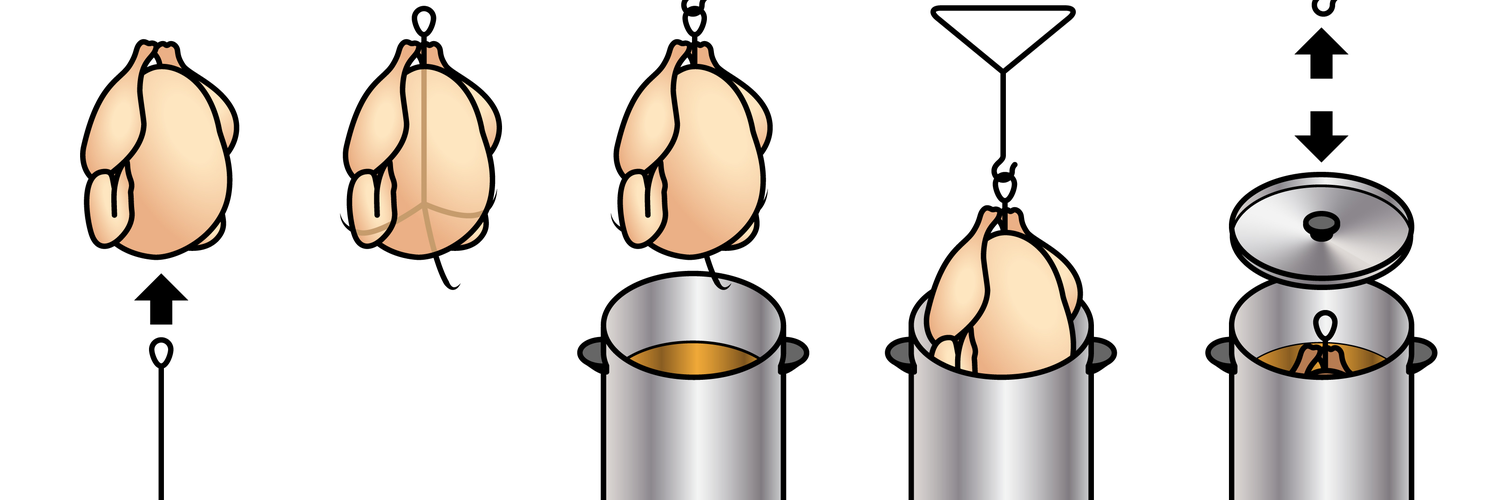For most Americans, turkey is the center of the Thanksgiving meal—and recently, deep frying the turkey has become a common method of preparation. But sometimes, it doesn’t go well. Sometimes, it explodes.
If you search “frying turkey explosion” on the Internet, you’ll be served pages and pages of search results with stories and videos of turkey frying gone wrong, including the one below from the National Fire Protection Agency (NFPA). According to the NFPA, Thanksgiving is the peak day for home cooking fires, followed by Christmas Day and the day before Thanksgiving. In 2018, U.S. fire departments responded to an estimated 1,630 home cooking fires on Thanksgiving—although, we don’t know how many of those were caused by attempting to deep fry a turkey.
Asking Why Questions to Uncover Details, Facilitate Understanding
Why do so many turkeys explode when cooked this way? First off, frozen turkeys account for many of these issues, not thawed. A fully thawed turkey should not have this same effect (unless you didn’t account for the volume displacement of the turkey and you have too much hot oil in the fryer).
But why do frozen turkeys explode? As I was researching this topic, I found that a lot of the articles written about the subject didn’t explain it in great detail. They didn’t explain the physics of it. By slowing down to build the Cause Map diagram, I asked more Why questions than many of the articles and blogs were able to answer. I found a few helpful articles, like this one from Gizmodo and this one from How Stuff Works. But I found that I really didn’t understand all of the causes involved until I was able to visually map out the cause-and-effect relationships. The Cause Map diagram allows you to slow down and dig into the details of an incident to more clearly explain the turkey fryer incident. Because if you better understand why deep fried turkeys cause this reaction, you can better prevent it from happening.
A Cause Mapping® Challenge for You
Here’s my challenge for you. Build a Cause Map diagram of a turkey fryer explosion. I’ll build one too, and I’ll post mine along with an explanation.
A 1-Why for this incident might look like this:

The 1-Why is accurate, but it's incredibly simple. It's missing a lot of detail. What other information about how it happened would need to be included to thoroughly understand the issue?
To reveal the detail, you’ll continue to ask Why questions and expand your Map. Remember, an incident happened one way and required all of its causes. Your Cause Map diagram can begin simply with a 5-Why and expand as much or as little as it needs to for you to thoroughly understand the issue and find effective solutions. There is no set number of causes for you to uncover. A 5-Why and a 20-Why can both be accurate and in agreement—the 5-Why is just a less detailed, partial explanation. The more cause-and-effect relationships you uncover, the more detailed your analysis is.
As you begin, here are some questions your detailed Cause Map diagram should help answer:
- Can you specifically explain what happens when frozen turkey is submerged in hot oil? How does a frozen bird cause such a violent reaction?
- Does the size of the turkey contribute to the risk of fire? How?
- Does the size of the fryer contribute to the risk of fire? Would the disaster still take place if you used a larger fryer?
- How do recommendations such as slowly lowering the turkey into the fryer reduce the risk of an incident?
- What is the ignition source of the explosion? Does that reveal creative solutions?
- Are there ways to minimize the risk to safety and property even if a fire/explosion takes place?
Using the information provided above, you can build your Cause Map diagram with sticky notes and submit the photo, draw the Map and submit the photo, or you can use our free Cause Mapping Investigation Template in Microsoft Excel and submit the Excel file. Choose the medium that works best for you. For more information on root cause analysis and how to build your Cause Map diagram, visit the ThinkReliability YouTube channel here.
Click here to see my Cause Map diagram of a turkey fryer incident!











